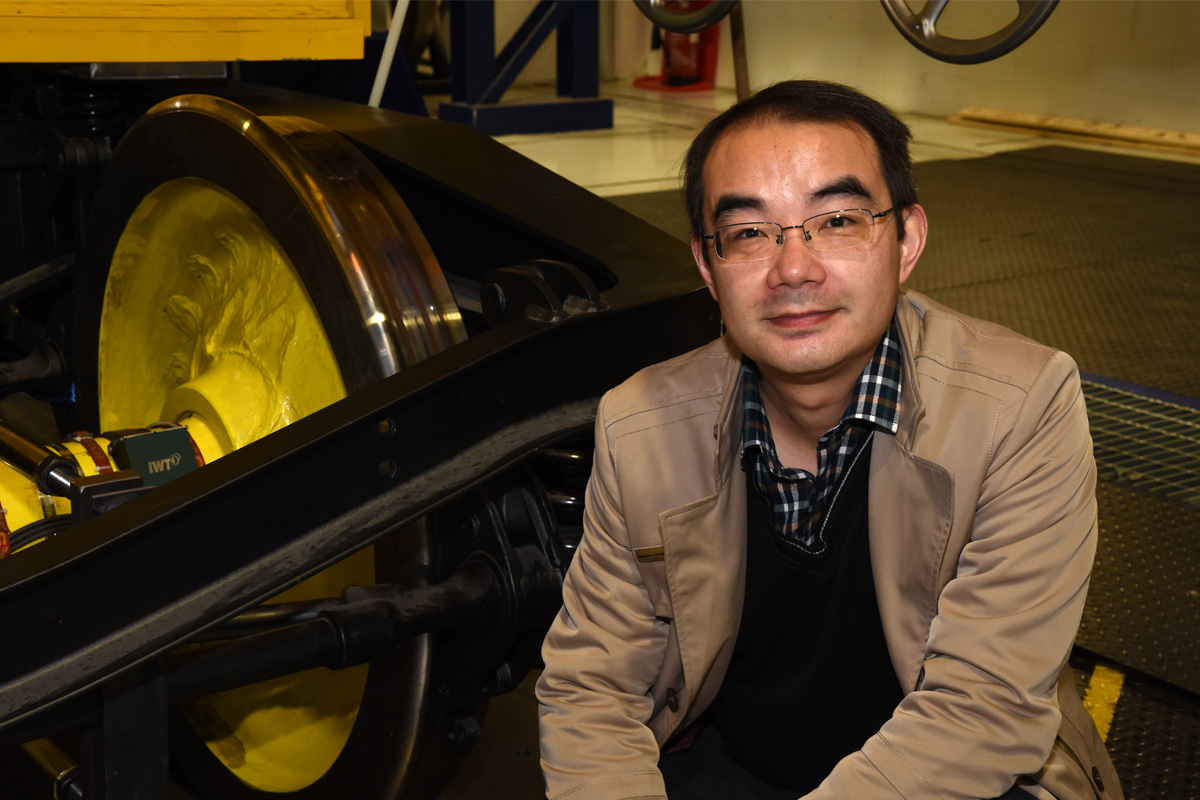Wheels can lose their profile in less than a month ultimately leading to severe vibration, discomfort for passengers and serious safety concerns
WEAR can result in the wheels of rail vehicles losing their perfectly round profile. This can ultimately lead to severe vibration, an uncomfortable ride for passengers and serious safety concerns. The development of high speed railways around the world is adding urgency to this issue.
Now, a researcher at the University of Huddersfield’s Institute of Railway Research (IRR) – on secondment from the world’s largest rail vehicle manufacturer – is probing the problem and assessing the best solutions. His preliminary conclusions include a need for key properties of wheels and track to be matched as closely as possible.
Bo Peng is a Senior Engineer in the test department of the giant Chinese company CRRC. Its wide range of locomotives and rolling stock includes high speed trains capable of running at more than 350kph. He has been based at the Institute for the past three years, researching and now writing up a doctoral thesis on deterioration in the roundness of railway wheels.
The issue has been known about since the 1990s, said Bo Peng, and has been found in almost all kinds of train worldwide. In particular, deterioration of wheel circumferential profile has been detected in countries including Germany and China following the introduction of high speed trains.
In extreme situations, wheels can lose their profile in less than a month with the damage even visible to the naked eye. When it becomes this serious, the standard remedy is to re-profile the wheel. But there is a need for a better solution to what is a complex problem, said Bo Peng, adding that flexibility in wheelsets and in tracks have been identified as possible causes.
After carrying out research using the Institute’s advanced suite of simulation software, he is arriving at a conclusion that the nature of the track has the most significant influence on wheels losing their roundness.
This will be the subject of the latest of a sequence of articles and international conference papers he has written in the course of his PhD project. Now in its final phase, it is being supervised by the director of the IRR, Professor Simon Iwnicki, and Principal Industrial Fellow Dr Philip Shackleton.
“The mechanism of railway wheel out-of-roundness is complicated,” explained Bo Peng.
“It is generally believed to be linked to a frequency-fixing mechanism, which means that a modal frequency in the vehicle/track dynamic system is the root cause. It could come from the flexibility of the wheelset or track, or something else.
“However no matter what it is, a passive solution to restrain the growth of wheel out-of-roundness is to alter the vehicle speed regularly during operation. This is proven to be effective through experiment but leaves a problem for the operation management. To tackle this problem actively, there should be a good match between the vehicle and the track.”
More Stories
£30m Rolling Stock Centre of Excellence launched
The University’s Institute of Railway Research welcomed leading industry experts to speak at the opening event
New £3.5m test rig for pantograph railway research
The pantograph test rig will join the Institute of Railway Research £4.5m test rig evaluating vehicular and tracks systems
£4.5m test rig evaluates new two-axle rail vehicle
The Institute of Rail Research is a partner for the new vehicle that will introduce greater passenger comfort, capacity and safety

